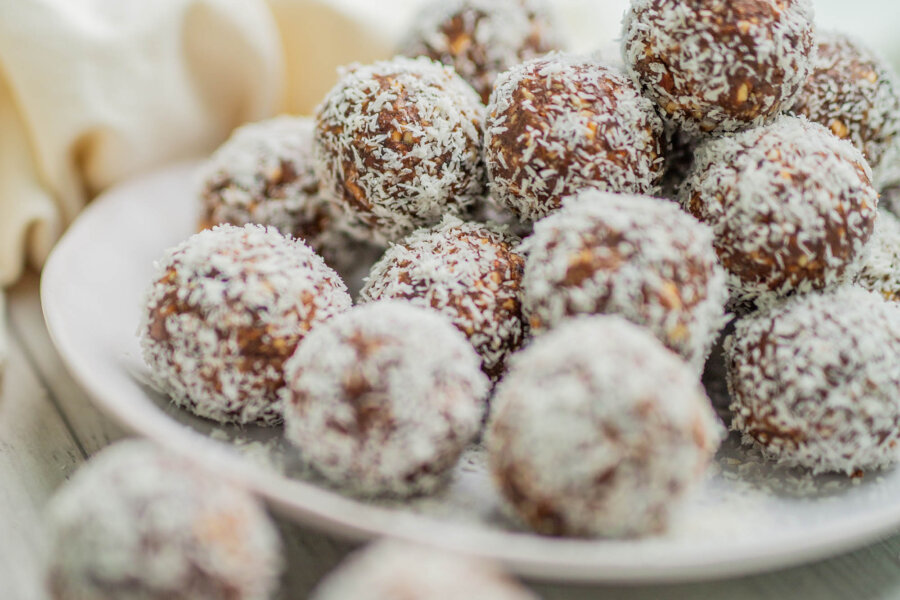This is a follow-up post on my period pain blog post that goes into a lot more detail about some of the root causes of period pain. You can find that article here: https://hazelandcacao.com/getting-to-the-root-cause-of-period-pain/
The foods mentioned in this article are just my selection of foods that have nutrients and properties that can help with period pain and generalised inflammation. The foods I mention in this article are rich in period calming nutrients and other properties that can help ease inflammation and pain, however, they will not do much if they are eaten sparingly or if the overall diet is still unhealthy. Using specific foods to help target certain problems, like period pain, is only useful after the larger underlying causes are addressed.

Ginger: Ginger has been shown in a few separate studies to be just as effective as NSAID medication (like Nurofen) at reducing period pain and one study found pain relief from ginger comparable to zinc supplementation (which can also help ease period pain). Results were seen when at least 1g of ginger was taken a day starting from the day before the period arrives until day 3 of the period. My favourite way to enjoy ginger is a fresh-pressed juice or ginger tea. It’s also a nice addition to many curries.
Turmeric: Turmeric is well known for its anti-inflammatory properties and is also well known for its pain-relieving abilities. Turmeric is particularly helpful for period pain as it can lower prostaglandins, decrease uterine contractions, and help to lower estrogen. Many practitioners recommend eating turmeric daily and doubling the dose a few days before and during menstruation. My favourite way to enjoy turmeric is in a turmeric latte, scrambled tofu and curries.
Beetroot: Beetroots are high in iron and vitamin C. This helps with the loss of iron during the period. Beetroots are one of the highest sources of Nitrates which are converted in the body to nitric oxide, a molecule that relaxes and widens blood vessels and affects how efficiently cells use oxygen. This also helps increase blood flow in the uterus which can help ease period pain and remove stagnant blood (similar to applying heat). My favourite way to eat beetroot is in fresh-pressed beetroot carrot orange ginger juice, beetroot burgers, and sweet potato chickpea salads. Beetroot is also fun to add to desserts for its red colour and natural sweetness.
Sour cherries: Sour cherries (and many other red-coloured fruits) are a good source of anthocyanins, which is a particular flavonoid with antioxidant effects. They are known to help reduce inflammation and pain, including period pain and hormone-related tension headaches and migraines before and during menstruation. Sour cherries also help with melatonin production which can aid in sleep. My favourite way to enjoy sour cherries is in homemade sour cherry chia jam on healthy crepes! As well as chocolate sour cherry raw desserts. Tart cherry juice has the best results for pain, especially when consumed daily.
Walnuts: Walnuts are a good source of Omega 3 which helps to lower inflammation and create more anti-inflammatory prostaglandins which reduce period pain. Just 1/4 cup of walnuts a day can provide the body with all the omega 3 it needs. My favourite way to enjoy walnuts is mixed with brown rice in porridge or stuffed capsicum. I also love using walnuts in many of my raw desserts.
Flax seeds: Flax seeds are also an excellent source of omega 3 which helps with period pain. They are also known to help balance estrogen in the body. High estrogen is often associated with increased prostaglandins which create more period pain. My favourite way to eat flax seeds is to ground up in oatmeal or a smoothie in the morning.
Sesame seeds: Sesame seeds are a high source of calcium, and a deficiency in calcium is correlated with increased period pain. Sesame seeds are also a good source of phytoestrogens which also help to balance estrogen in the body. My favourite way to eat sesame seeds is in raw treats that call for tahini as well as sprinkling sesame seeds on stirfries and avocado.
Dark leafy greens: Leafy greens are very detoxifying. They can help the liver clear out excess toxins including excess hormones which can cause inflammation and estrogen excess. They are also a rich source of calcium and magnesium which is especially important for period pain. My favourite way to eat my greens is in various salads and also green juices.
Sunflower seeds: Sunflower seeds are one of the richest sources of vitamin E (other sources include avocado, olive oil, almonds, and hazelnuts) Vitamin E is a key nutrient that has been shown in studies to help low period pain and reduce overall inflammation.
Avocado: Avocados are a particularly rich source of boron. Boron has been shown in studies to reduce the severity and duration of period cramps in young women. Avocados are also a good source of plant-based omega 3 which can help to lower inflammation. My favourite way to eat avocados is avocado toast, in salad sandwiches, with a big side of scrambled tofu or in a chocolate avocado mousse.
Black beans: Black beans are a great source of iron and zinc. Zinc has also been shown to help reduce period pain when taken a few days before the onset of period pain. My favourite way to enjoy black beans is vegan nachos, black bean burgers, and black bean chocolate brownies.
Dark Chocolate: Dark chocolate, or cacao, is one of the highest sources of magnesium. Magnesium has been shown effective in reducing period cramps in preliminary studies. It works mostly by helping the uterine muscles to relax and also by building progesterone which counterbalances estrogen. It’s important to stick to good quality chocolate at least 85% and above that does not have dairy and is low in refined sugar. Raw chocolate made with cacao (not cocoa) dairy-free and naturally sweetened is the best choice. My favourite way to eat chocolate is as is! or in the many healthy chocolate desserts on my blog.
References:
https://pubmed.ncbi.nlm.nih.gov/23447916/
https://pubmed.ncbi.nlm.nih.gov/19216660/
https://www.ncbi.nlm.nih.gov/pmc/articles/PMC3518208/
https://pubmed.ncbi.nlm.nih.gov/24559600/
https://www.sciencedirect.com/science/article/abs/pii/S1357272508002550?via%3Dihub
https://pubmed.ncbi.nlm.nih.gov/19026735/?from_term=turmeric+and+dysmenorrhea&from_pos=2
https://www.ncbi.nlm.nih.gov/pmc/articles/PMC1082898/
https://www.brainhq.com/brain-resources/brain-healthy-foods-nutrition/nuts-brain-health/









